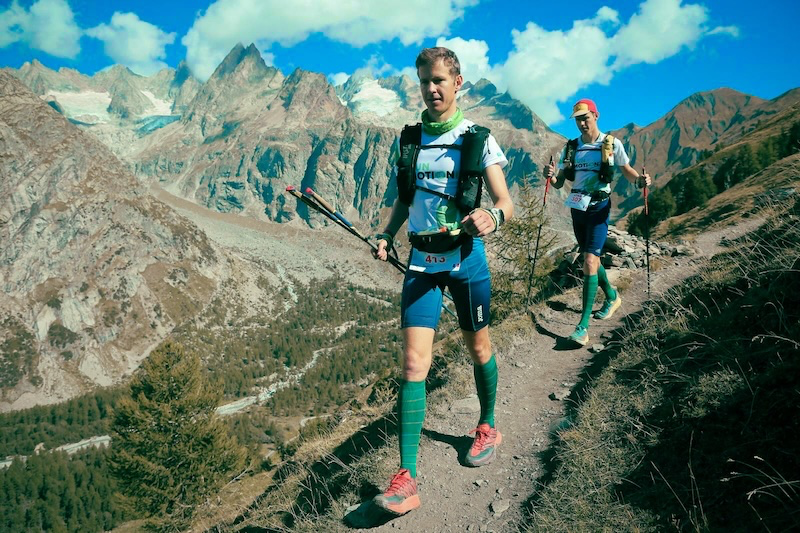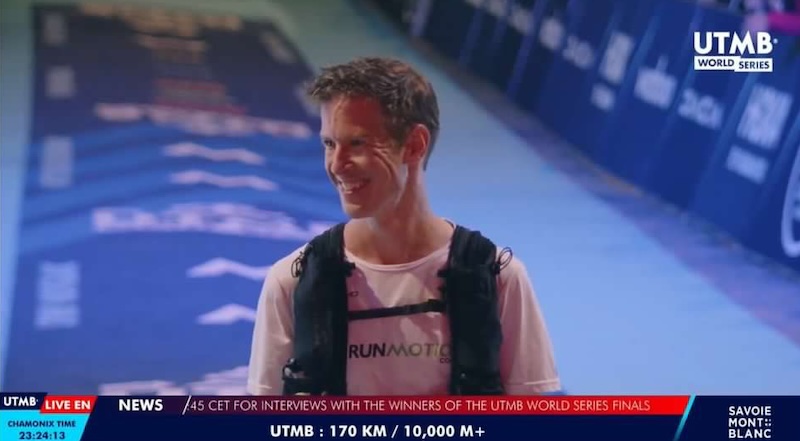
You’ve just discovered trail running and already dream of pinning a bib on the UTMB or the Diagonale des Fous? These extraordinary adventures are certainly inspiring. Emotional finisher videos, epic performances by elite runners, breathtaking landscapes, 100-mile races… it’s all very tempting. But behind the dream lies a harder reality: you don’t become an ultra-trail runner overnight.
In this article, I’ll share practical and actionable tips for increasing trail distances without injury—physically or mentally. A reasoned progression plan, built on experience, so you can enjoy each stage and stay motivated in the long term.
Contents
The UTMB dream trap: a finish line… but at what cost?
We’re seeing it more and more: runners signing up for a 100 km UTMB World Series event in their very first year of trail running. Why? To earn a coveted Running Stone and get a shot at running the UTMB the following year.
The problem is, some do finish… but most fail, sometimes badly. Injuries, withdrawals, loss of motivation. An ultra isn’t just a longer race. It’s an extraordinary effort that demands patience, humility, and above all, experience.
So before aiming for an ultra, you need to ask one essential question: have I really built the foundation?
Progressive increase in trail distances: the key to longevity
If you want to go far in trail running, you need to build a solid base. You don’t build a house without a foundation. The body—just like the mind—needs time to adapt to the demands of long distances and elevation gain.
Progression is a key success factor in trail running. By respecting each stage, you significantly reduce the risk of injury, gradually build up your endurance, and are better equipped to handle the unexpected.
Step 1: Master the 20 to 40 km formats
Just starting out or coming from road running? Start with short to medium trail races, between 20 and 40 km. Mix terrains: smooth, technical, mountainous. At this stage, you learn to manage effort uphill, descend without wrecking your quads, and fuel properly.
You’ll also get to know the basics of trail gear: pack, flasks, poles, suitable shoes, nutrition… All elements to master and test on a 40 km trail before even thinking about going beyond 50 km.
Step 2: Tackle the 80 to 120 km formats
Once you’re comfortable with intermediate distances, you can consider moving on to longer trails. Races like Les Templiers, the 90 km du Mont-Blanc, the CCC, or the SaintéLyon are demanding but achievable with good preparation.
This is where you learn to manage night running, long autonomous sections, and weather changes. You’ll listen to your body and handle low points. These races are essential milestones before aiming higher.
Step 3: Aim for ultras over 120 km
If you’ve taken the time to build up, your body is handling it well, and you feel ready, you can consider tackling an ultra over 120 km. UTMB, Diagonale, Échappée Belle… These are extreme endurance formats reserved for experienced runners.
You must have validated all previous stages and not become obsessed with the UTMB. It’s not an end in itself but a milestone that rewards your progression.
In summary, I recommend 2 years at each level. If you want to move faster, allow at least 1 year to master the 20-40 km formats, and 1 year for the 80-120 km formats.

My mistakes, my lessons: the story of a rushed trail runner
I speak from experience. I started trail running in 2018 and quickly moved to longer formats in 2019. The MCC, the 6000D… And during the 6000D, I told myself, “Go all out on the final descent,” even though I had already done 3000 m of downhill. Bad idea. Knee injury. I finished walking, frustrated.
In 2021, I completed the CCC (100 km UTMB, 6000 m D+). Then I tried the XXL Race, a 110 km over two days, starting at midnight. A great format to learn how to handle distance. But from the start, my headlamp failed. One simple gear mistake, and I’m running in the dark… Fortunately, a friend I ran into on the course lent me his spare lamp…
The following year, I signed up for the UTMB (170 km, 10,000 m D+). I held on until km 130, then dropped out. That knee again. I had skipped a step: I should have done a 120-130 km race that year to prepare.
But those mistakes taught me a lot. In 2023, I came back better prepared. I completed the UTMB in under 30 hours, in the top 150. And I did it with a smile (okay, with a bit of pain too), and injury-free. Because this time, I was ready.
Ps: I already had over 15 years of running experience when I started trail running, and had completed over 25 trail races before attempting the UTMB.
Learning at every stage: the school of trail running
In trail running, every distance teaches you something. On a 40 km, you can eat poorly or mismanage your effort and still finish. On a 100 miler, the slightest mistake can lead to a DNF.
You need to learn to:
- Manage your nutrition and hydration over time
- Avoid overheating and chilling
- Choose your gear carefully (headlamp, pack, shoes…)
- Listen to your body, anticipate warning signs
Personally, my weakness was muscle fatigue. So I strengthened my general physical preparation, added hill work and specific strength training. That’s what helped me better handle long descents.
Nutrition is also something to work on. Some people don’t digest gels well, others lack salt. You need to test during training, in real conditions, to avoid surprises on race day.
Don’t skip the steps—enjoy them!
Trail running is a school of patience. And if you want to last in this sport, the journey must matter as much as the destination. There will be highs, lows, maybe injuries—but also magical moments. Sunrise on a ridge, thrilling descents, unforgettable encounters.
The important thing isn’t just finishing the UTMB or the Diagonale des Fous. It’s everything you built to get there.
And remember, it’s not just about those two trail legends. Our regions are full of beautiful trail races worth exploring. They’ll give you amazing experiences and help you learn more about yourself.
So, what’s your trail dream?
And you, what distance are you comfortable with today? What race are you dreaming of?
If you want help structuring your progression, avoiding classic mistakes, and training smartly, check out RunMotion Coach, the official coaching app of the UTMB World Series and over 30 partner trail races (SaintéLyon, Les Templiers, Mont-Blanc Marathon, Ultra Marin,…).
With RunMotion Coach, you get a personalized training plan, adapted to your level, schedule, and goals. Download the app and start your plan today. Your adventure begins now.